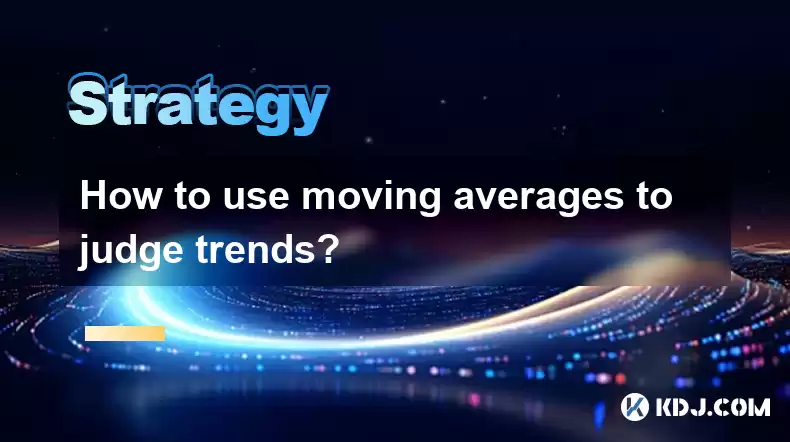-
 Bitcoin
Bitcoin $119300
2.40% -
 Ethereum
Ethereum $4254
-0.20% -
 XRP
XRP $3.184
-1.38% -
 Tether USDt
Tether USDt $1.000
0.00% -
 BNB
BNB $803.9
0.58% -
 Solana
Solana $183.1
1.50% -
 USDC
USDC $0.0000
0.01% -
 Dogecoin
Dogecoin $0.2339
-2.87% -
 TRON
TRON $0.3384
0.88% -
 Cardano
Cardano $0.8018
-0.29% -
 Hyperliquid
Hyperliquid $45.13
3.14% -
 Chainlink
Chainlink $22.10
0.96% -
 Stellar
Stellar $0.4439
-0.94% -
 Sui
Sui $3.875
-0.73% -
 Bitcoin Cash
Bitcoin Cash $570.7
0.24% -
 Hedera
Hedera $0.2589
-2.90% -
 Ethena USDe
Ethena USDe $1.001
-0.01% -
 Avalanche
Avalanche $23.83
-1.73% -
 Litecoin
Litecoin $123.8
2.61% -
 Toncoin
Toncoin $3.351
-1.13% -
 UNUS SED LEO
UNUS SED LEO $9.103
1.13% -
 Shiba Inu
Shiba Inu $0.00001356
-1.40% -
 Uniswap
Uniswap $10.93
-0.19% -
 Polkadot
Polkadot $4.057
-1.97% -
 Dai
Dai $1.000
0.01% -
 Cronos
Cronos $0.1646
4.66% -
 Ethena
Ethena $0.7974
8.11% -
 Pepe
Pepe $0.00001208
-2.89% -
 Bitget Token
Bitget Token $4.445
-1.70% -
 Monero
Monero $268.8
-2.00%
How to use moving averages to judge trends?
By combining multiple moving averages with varying periods and types, traders can gain insights into trend strength, direction, and potential trend reversals.
Feb 25, 2025 at 11:01 am

Key Points:
- Moving averages smooth out price fluctuations to reveal underlying trends.
- Different types of moving averages provide different insights into trend strength and direction.
- By combining multiple moving averages, traders can identify potential trend reversals and trading opportunities.
Using Moving Averages to Judge Trends
Choose the Appropriate Moving Average Type:
- Simple Moving Average (SMA): Calculates the average of prices over a specified period. Simple to use and provides a clear and immediate representation of the current trend.
- Exponential Moving Average (EMA): Gives more weight to recent prices, providing a faster response to price changes. Suitable for detecting shorter-term trends.
- Weighted Moving Average (WMA): Assigns higher weights to prices closer to the current period, highlighting recent price action. Useful for identifying strong trends.
Determine the Moving Average Period:
- Short-term (SMA-10, EMA-5, WMA-7): Respond quickly to price changes and are suitable for identifying day trading opportunities.
- Mid-term (SMA-50, EMA-20, WMA-30): Offer a balance between noise reduction and sensitivity to trend changes.
- Long-term (SMA-200, EMA-100, WMA-60): Smooth out significant fluctuations and indicate overall market direction.
Establish the Trend Direction:
- Upward trend: Moving average line slopes upwards, and price is above the moving average.
- Downward trend: Moving average line slopes downwards, and price is below the moving average.
- Neutral trend: Moving average line is relatively flat, and price fluctuates around the moving average.
Identify Potential Trend Reversals:
- Bullish cross: Price crosses above the moving average after an extended downtrend, indicating a potential uptrend reversal.
- Bearish cross: Price crosses below the moving average after an extended uptrend, signaling a potential downtrend reversal.
Combine Multiple Moving Averages:
- Bullish confluence: Price is above multiple moving averages, indicating a strong uptrend.
- Bearish confluence: Price is below multiple moving averages, suggesting a persistent downtrend.
- Moving average convergence/divergence (MACD): Compares the EMA of two different periods to identify trend momentum and potential reversals.
FAQs:
What if the moving average line is flat?
A flat moving average line indicates a neutral trend, suggesting that the market is not strongly trending in either direction.
Can moving averages be used alone?
While moving averages are a valuable tool for trend analysis, they should not be used as the sole basis for trading decisions. Traders should consider other factors such as technical indicators, market sentiment, and fundamental analysis.
What is the advantage of using both short-term and long-term moving averages?
Using both short-term and long-term moving averages allows traders to identify both short-term price fluctuations and long-term trends. This can help in identifying potential trading opportunities and managing risk.
Can moving averages be applied to any cryptocurrency?
Moving averages can be applied to any cryptocurrency, as they are based on price data. However, the specific moving average parameters (period and type) may need to be adjusted depending on the volatility and trading volume of the cryptocurrency.
Disclaimer:info@kdj.com
The information provided is not trading advice. kdj.com does not assume any responsibility for any investments made based on the information provided in this article. Cryptocurrencies are highly volatile and it is highly recommended that you invest with caution after thorough research!
If you believe that the content used on this website infringes your copyright, please contact us immediately (info@kdj.com) and we will delete it promptly.
- KiwiSavers, Crypto Returns, and Digital Investment: Are Kiwis Missing Out?
- 2025-08-11 06:30:11
- Ruvi AI's Sales Surge: Could It Outpace Tron in the Crypto Race?
- 2025-08-11 06:30:11
- Meme Coin Mania: Is Shiba Inu Out and Little Pepe In?
- 2025-08-11 06:50:12
- Bitcoin Casino Weekly Challenge: Hitting the Jackpot in Crypto Gaming
- 2025-08-11 06:50:12
- Cardano (ADA): Riding the Bull Cycle Wave to New Heights?
- 2025-08-11 07:10:12
- Bitcoin Institutional Holdings in 2025: A Bullish Outlook
- 2025-08-11 07:15:19
Related knowledge

How to use stop-loss orders to limit potential losses?
Aug 08,2025 at 02:01pm
Understanding Stop-Loss Orders in Cryptocurrency TradingA stop-loss order is a risk management tool used by traders to automatically sell a cryptocurr...

What are the most promising altcoins to invest in?
Aug 10,2025 at 11:42am
Understanding the Role of Private Keys in Cryptocurrency WalletsIn the world of cryptocurrency, private keys are the cornerstone of ownership and cont...

How to read cryptocurrency charts and use technical analysis?
Aug 08,2025 at 11:08am
Understanding the Basics of Cryptocurrency ChartsCryptocurrency charts are graphical representations of price movements over time. These charts are es...

What is the difference between long-term holding (HODLing) and short-term trading?
Aug 10,2025 at 05:30pm
Understanding HODLing in the Cryptocurrency SpaceThe term HODL originated from a typo in a 2013 Bitcoin forum post and has since become a widely accep...

How to do your own research (DYOR) before investing in a crypto project?
Aug 08,2025 at 09:07pm
Understanding the Core Principles of DYOR in CryptocurrencyEngaging in due diligence before investing in any cryptocurrency project is essential to mi...

How to build a diversified crypto portfolio?
Aug 09,2025 at 12:21pm
Understanding the Importance of Diversification in CryptoDiversification in the cryptocurrency space is a strategy used to reduce risk by spreading in...

How to use stop-loss orders to limit potential losses?
Aug 08,2025 at 02:01pm
Understanding Stop-Loss Orders in Cryptocurrency TradingA stop-loss order is a risk management tool used by traders to automatically sell a cryptocurr...

What are the most promising altcoins to invest in?
Aug 10,2025 at 11:42am
Understanding the Role of Private Keys in Cryptocurrency WalletsIn the world of cryptocurrency, private keys are the cornerstone of ownership and cont...

How to read cryptocurrency charts and use technical analysis?
Aug 08,2025 at 11:08am
Understanding the Basics of Cryptocurrency ChartsCryptocurrency charts are graphical representations of price movements over time. These charts are es...

What is the difference between long-term holding (HODLing) and short-term trading?
Aug 10,2025 at 05:30pm
Understanding HODLing in the Cryptocurrency SpaceThe term HODL originated from a typo in a 2013 Bitcoin forum post and has since become a widely accep...

How to do your own research (DYOR) before investing in a crypto project?
Aug 08,2025 at 09:07pm
Understanding the Core Principles of DYOR in CryptocurrencyEngaging in due diligence before investing in any cryptocurrency project is essential to mi...

How to build a diversified crypto portfolio?
Aug 09,2025 at 12:21pm
Understanding the Importance of Diversification in CryptoDiversification in the cryptocurrency space is a strategy used to reduce risk by spreading in...
See all articles

























































































